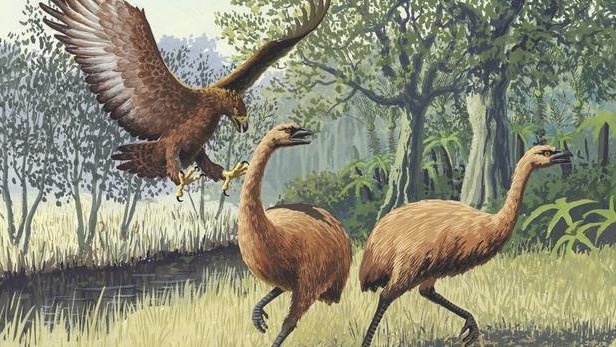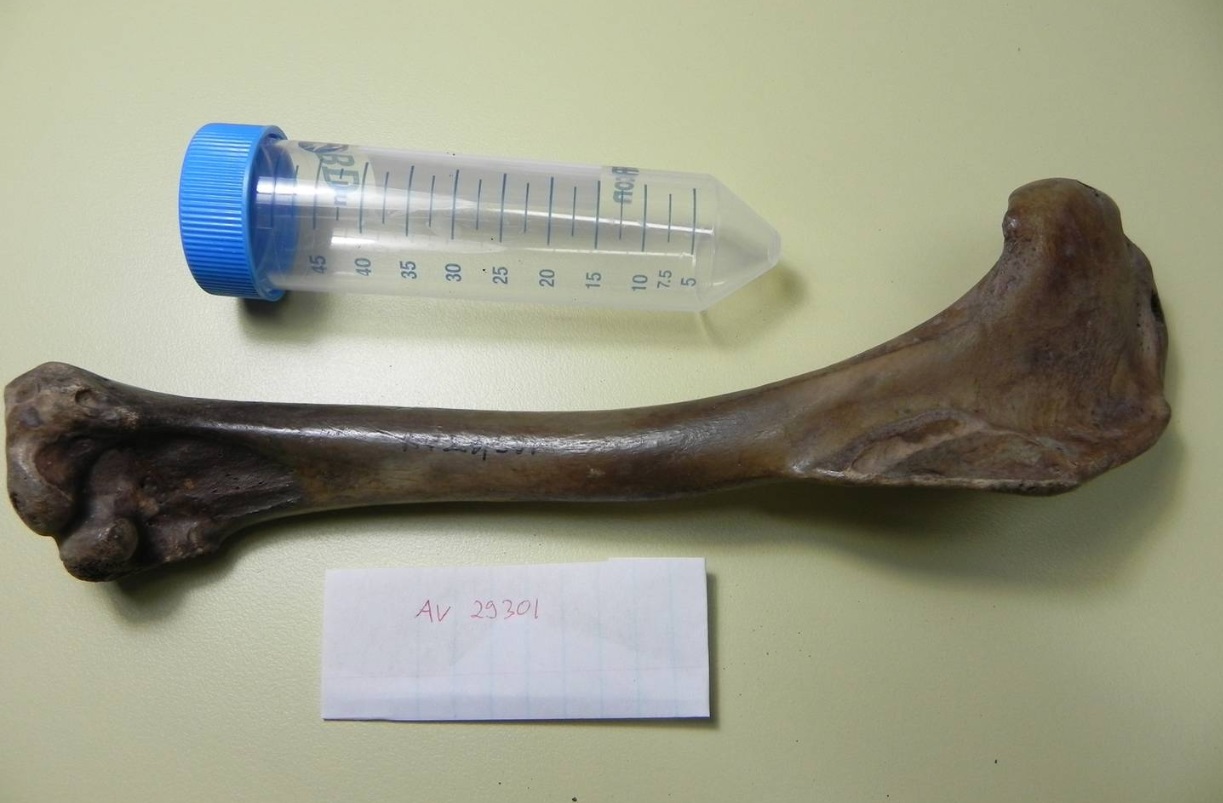
But it was only after it arrived here and underwent two million years of evolution that the Haast's eagle, which boasted a 3m wingspan and claws the size of a tiger's, became a global giant.
Scientists have long viewed New Zealand as a "Moa's Ark", a landmass that had been isolated since the age of the dinosaurs, protecting its unique fauna and flora from the rest of the world.
While that paradigm has been shown to be incorrect, the giant birds of prey, Haast's eagle and Eyles' harrier that called New Zealand home prior to their extinction shortly after human arrival, certainly helped to establish the picture of a primeval archipelago, lost in time.
At the top of the food chain in New Zealand, Haast's eagle, the largest eagle in the world with a weight of up to 15kg, and Eyles' harrier, the largest harrier in the world, had filled ecological niches that are on other landmasses occupied by animals such as large cats or canines.
Until now, the evolutionary and biogeographic history of these island giants had long been a mystery.
The first molecular data from Haast's eagle, which was published more than a decade ago, gave a first indication that things may be a bit more complex than they seemed.
"This molecular data suggested that Haast's eagle was not closely related to other large eagles, like the Australian wedge-tailed eagle, but was in fact a close relative of the comparatively tiny, 1kg Australian little eagle, one of the smallest eagles in world," explained Dr Michael Knapp, a researcher in the University of Otago's Department of Anatomy and the lead author of a new study.
To add to the surprise, the molecular dataset indicated that genetically, at least for the very small subset of the genome that was analysed, Haast's eagle was not very different from the little eagle.
In fact, they seemed to share a common ancestor sometime during the ice ages, a period of alternating cold and warm times which started about 2.5 million years ago and which we are likely still in today.

"On an evolutionary time scale, that is essentially yesterday."
Dramatic changes
The new study analysed a significantly larger part of Haast's eagle's genome and is also the very first molecular analyses of Eyles' harrier.
For Haast's eagle, the study essentially confirms the earlier work, although the bigger dataset puts the age of the common ancestor of the Australian dwarf and the New Zealand giant closer to 2.3 – 2.5 million years ago, at the very beginning of the ice ages.
Curiously, though, the study found exactly the same story for Eyles' harrier.
Its closest relative, as it turned out, is the small to medium sized Australian spotted harrier, and they share a common ancestor at almost exactly the same time as the eagles.
Canterbury Museum natural history senior curator Dr Paul Scofield said these giant birds of prey went through some dramatic changes in a relatively short time.
"Two and a-half million years is not long in evolutionary terms. It's certainly a much shorter time frame than was originally thought.
"These results fit into a broader trend in our field, where we're increasingly finding that species we see as iconic New Zealand species actually haven't been here that long."
The spectacular size increase of New Zealand's birds of prey is likely a result of them essentially "climbing up" the food chain after arriving in New Zealand.
In Australia, large marsupials were the top predators, with eagles and harriers likely targeting only small animals.

So the larger the bird, the more successful it would have hunted and produced offspring, eventually leading to the now iconic giant size of Haast's eagle and Eyles harrier.
History rewritten
So, are New Zealand's iconic birds of prey just Australians in disguise?
"They certainly still have very close relatives across the ditch, but one could argue that the ancestors of Haast's eagle and Eyles harrier chose to leave Australia for New Zealand, and that New Zealand made them the special birds they were."
It's the latest instance in which DNA analysis has dramatically changed what we know about many of our native species.
To the relief of those uncomfortable with the thought of our national bird being an Aussie immigrant, a landmark DNA-based study in 2014 found the kiwi was more closely related to the giant Madagascan native.
That same year, insights gleaned from DNA analysis also revealed how the moa was more closely related to South America's tinamous than its old bushmate, the kiwi, and concluded both moa and kiwi separately evolved to become flightless after their ancestors flew here.
In more recent findings, researchers revealed an Otago population of the world's smallest - and possibly cutest - penguin species actually hailed from across the Tasman and had arrived as recently as the past few hundred years.
Haast's eagle
• Its largest claws were as much as 9cm long, making them as large as those of a tiger.
• Most experts agree that it is most likely to have been a more sombre brown or brownish-grey similar to the other very large forest eagles found around the world today.
• Skeletons of Haast's eagles have been found in the drier eastern parts of the South Island, but they probably also occurred in the North Island as well.
• Evidence of talon marks on moa skeletons confirm that they predated on these large birds - prey that weighed up to 200kg. But they also would have targeted other flightless birds - particularly aptornis, weka, takahē, flightless geese and ducks - and potentially even unfortunate humans.
